About the animals - Poultry
NB Even though we only mention the physical animal welfare aspects that does not mean that there are no emotional welfare aspects of importance. We will deal with those in a later stage of the development of this site. For now you can read about it in the report of Compassion in World Farming: STOP – LOOK – LISTEN / RECOGNISING THE SENTIENCE OF FARM ANIMALS
Ducklings, poults, goslings and chicks
Atlas, Aurora, Hendrix, Otis, Gordy, Daisy, Matt, Lenny * and their 30 little friends luckily escaped from horrific hatchery abuse in the United States of America.
(* Please click on their names to read their story)
In (factory) farming poultry chicks (chicks, ducklings, poults (baby turkey) and goslings) usually hatch in special hatcheries. For egg-production fit female chicks are selected from the males. The unfit and the males are killed. For meat-production only the unfit are killed. Then, within several hours of hatching, the chicks, ducklings or poults are transported from the hatchery to a company or contract farm for growing into laying birds or for fattening.
Welfare problems:
- death of 20 % of chicks (on average) before, during or after hatching (chicks not hatched or hatched too early are destroyed)
- killing of unfit/male chicks (film of a chick grinder - images might be disturbing)
- beak trimming of broiler breeder chicks, laying hen chicks and poults
- barn fires
- death during transport and unloading
NB the links on this page give you official and scientific reports/no films or photos unless mentioned otherwise.



Ducks
Lara was rescued in Holland. And Kwik and Kwak were rescued from a foie gras farm. They are our ambassadors for the ducks.
In Europe and the
USA, ducks are reared for meat (this link shows you the film/images of the interior of a duckfarm in France), and foie gras whereas in Asian countries they are
primarily meant for egg production.
Welfare problems:
- access to open water sources (see also the scientific report "Water off a duck’s back: Showers and troughs match ponds for improving duck welfare"
- growth rates
- diseases
- foie gras production
- barn fires
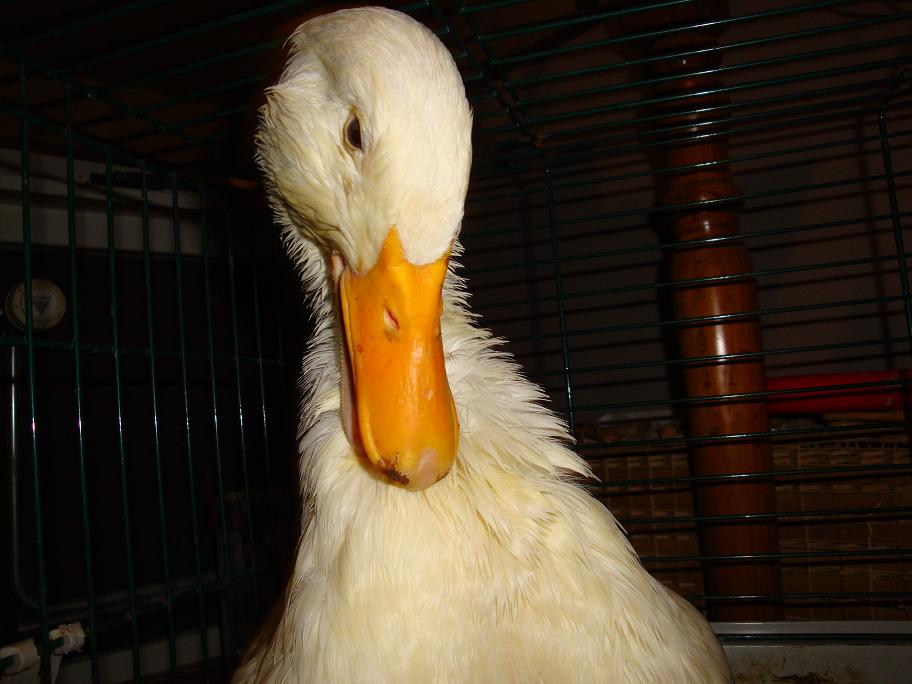
Broilers
Read the heartwarming stories of Kakel , Plof , Piepie , Joost and Witte Reus , Clara and Cybille , Pien , eight broiler chicks from Belgium and Holland.
Welfare problems:
- management and housing, in particular their barren environment, density of animals, feed restriction and limited sources of light
- slaughter
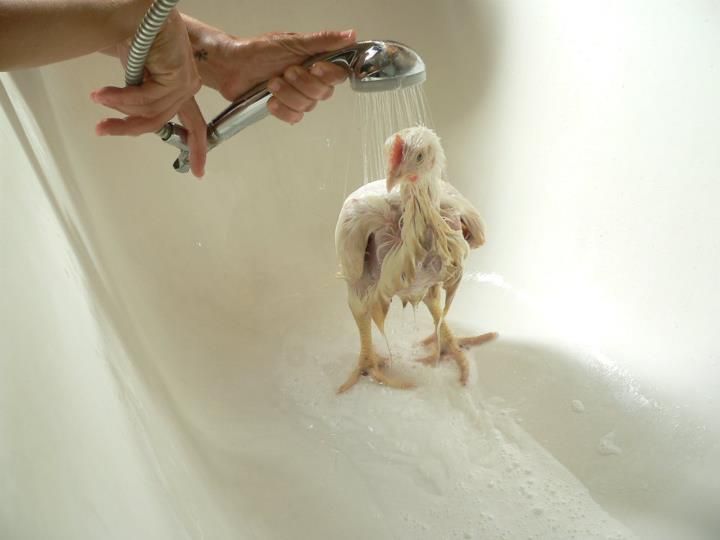
Clara

Cybille
Kakel
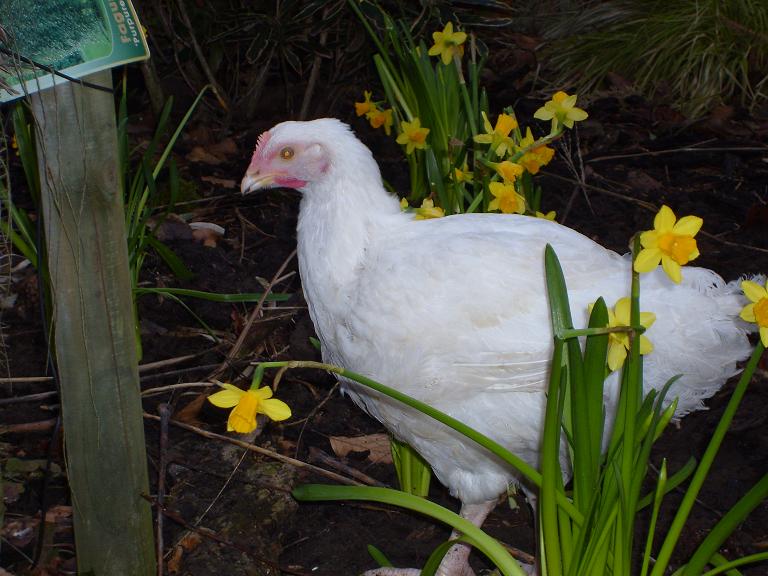
Plof
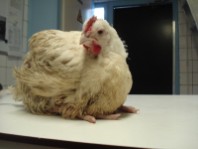
Witte Reus
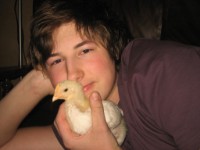
Piepie

Joost
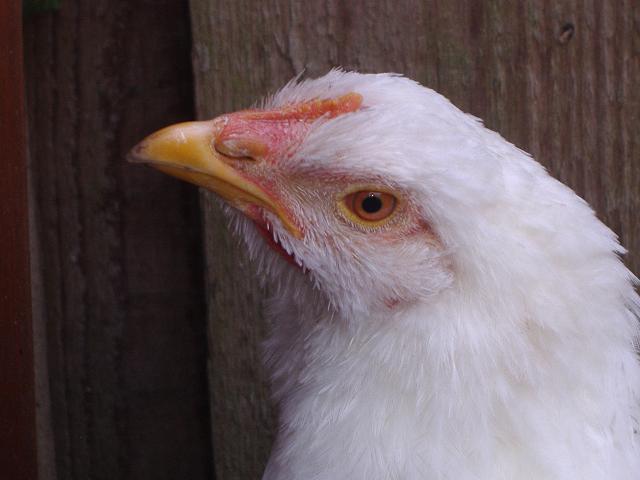
Pien
Broiler breeder parents
Bitchy, Fluffy, Bob, Elvis, Peter Steele, Kneus, Opa'tje, Captain Jack/Kassa, and Bijbal were dumped in the Ommerense bos in the Netherlands. They are broiler breeder hens.
Broiler breeder parents live in a
broiler breeder farm.
In the UK alone there are approximately seven million breeders,
supplying around 700 million fertile eggs annually. Eighty to 90% of
these birds are female.
- hunger and frustration because of their severely restricted diets (especially for the males)
- management and housing, in particular their barren environment, density of animals and limited sources of light
- diseases
- slaughter


Laying hens
Pépette, Katootje, Louise, Ann and Tracey are ex battery-hens, and
the 4 biochicks and Number 10 are ex-free range hens from France and the US, all given another chance to lead a normal hen's life.Chickens farmed for eggs are called egg-laying hens. The young chicks to be reared as laying hens are supplied by special breeding companies. When egg-laying chicks hatch in a hatchery, they are transported by a conveyor belt , sexed and the males and the unfit are seperated to be destroyed either by gas or they are crushed alive. The females are raised in a special farm before they go to a farm for egg production, that ranges from free-range systems to battery-systems.
Welfare problems:
- cages (it is estimated that 60% of the world’s eggs are produced in battery cages. Since the 1st of January 2012 the battery cage is banned in the EU but still in use in various countries (edited january 2012). Battery cages have been banned in Switzerland since January 1, 1992. It has been the first country to do so.
- freerange still has welfare problems like debeaking of chicks, short life (not more than 2 years), forced molt (by starvation) still practised by some farms
- barn fires
- transport
- slaughter
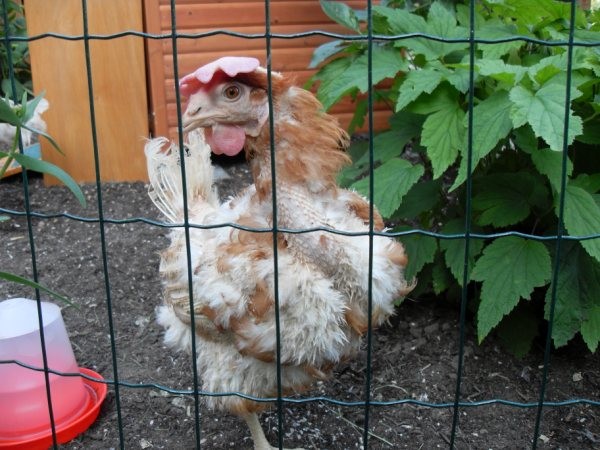
Katootje
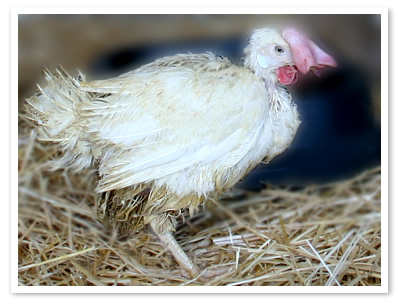
Number 10
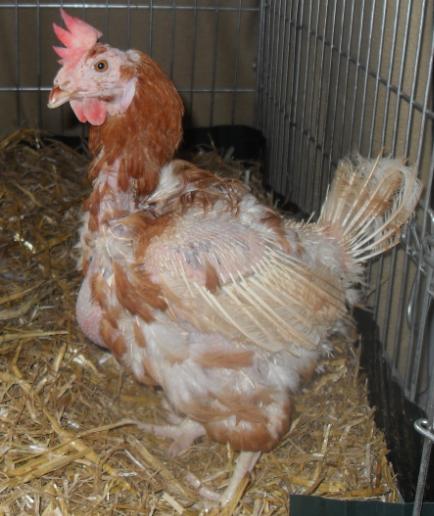
Louise
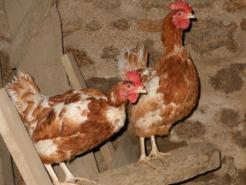
the 4 "bio-chicks"
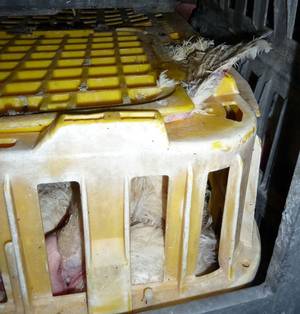
Ann
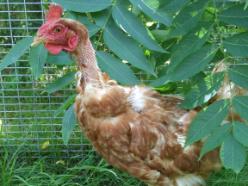
Tracey
This turkey was found on the side of a road in France. If you would like to know more about turkeys and their natural behavior please watch the film My Life as a Turkey
Over 630 million turkeys a year are used for meat production, globally. Of these, over 250 million are in the US and over 220 million in Europe.
Welfare problems:
- artificial reproduction (milking the semen from the males/insemination in the females) you can watch a film here
- housing (high density in barren sheds with little or no opportunity to express natural behaviours such as perching, ground pecking and foraging), you can see a film here
- beaktrimming (of poults) and poor lighting to reduce feather picking
- diseases
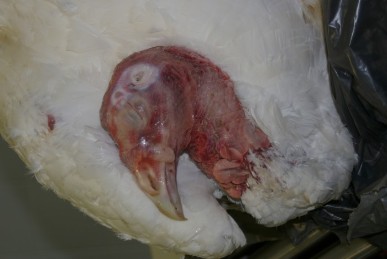
Geese
Hope and Paul are geese with two totally different backgrounds. Paul was saved from his crate at a livestock market. The story of Hope shows us how special geese really are.
Geese are farmed for meat, for foie gras and for their down.
Welfare problems:
- plucking alive
- foie gras
- diseases
- loading and handling
- slaughter
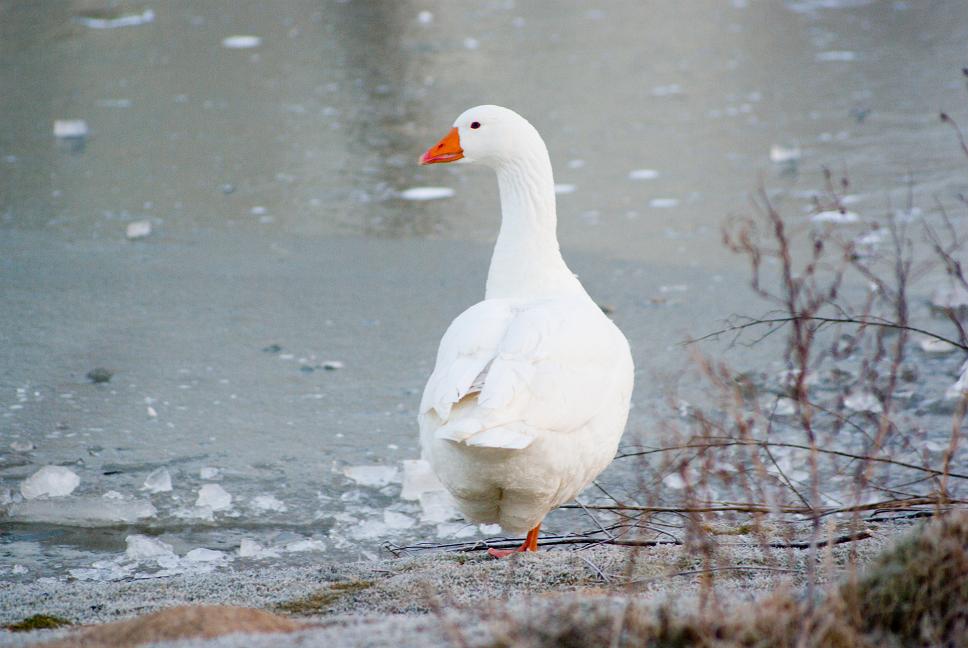
Hope
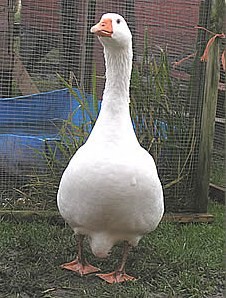
Paul